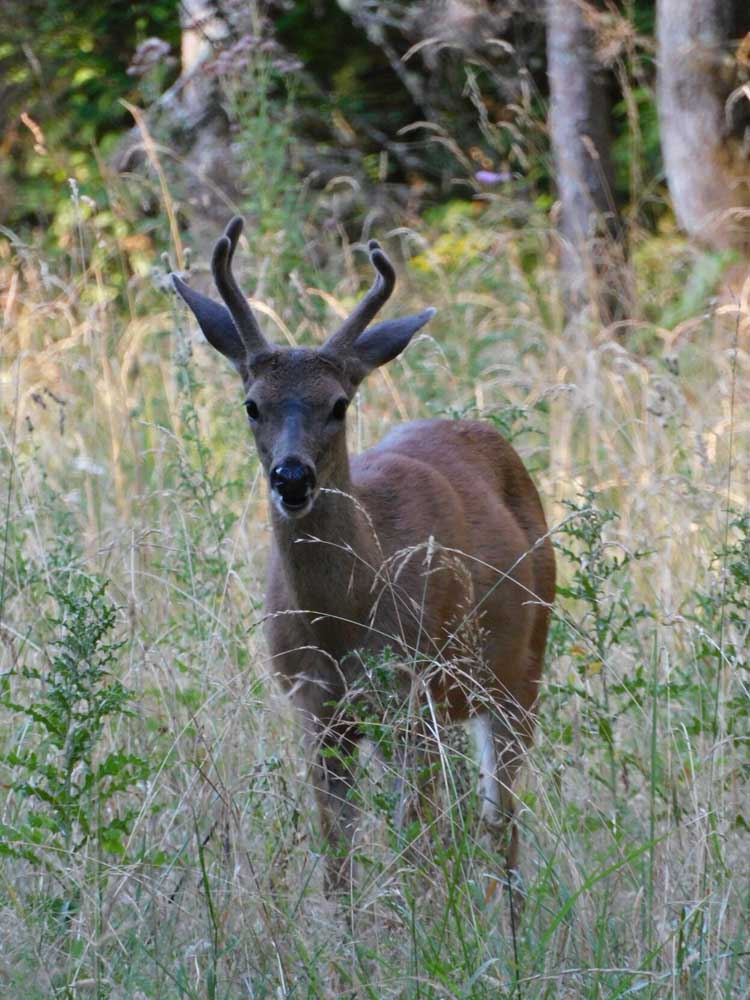Outdoors: Was there a ‘spike’ in blacktail deer harvest last year?
Published 7:00 am Saturday, August 10, 2024

- A Siuslaw Unit blacktail deer photographed in August 2023 when the living was easy.
When the western Oregon deer season dates were announced for 2023, hunters lifted the collective eyebrow — blacktail season was running through Nov. 9. A few of us applied for the hardest-to-get dream hunt deer tags rather than the easier-to-draw hunts because we really wanted to hunt blacktail deer in the rut.
Armchair prognosticators predicted a blacktail buck slaughter. So what happened? Let’s look at the numbers.
In 2023, hunters enjoyed a harvest success of 26% in northwest Oregon and 42% in the southwest. Now let’s compare that with harvest success in 2022, which averaged 17% in northwest Oregon and 33% in southwest Oregon.
In terms of number of bucks that hunters tagged, the harvest jumped from an estimated 220 to a reported 413 bucks in the northwest zone and from 179 to 338 bucks in the southwest.
With the 2023 season going deeper into November, did that contribute to an unprecedented harvest increase?
When we go back to 2021, we find the identical harvest percentage: 26% success in the northwest and 42% success in the southwest. In 2020, the numbers were not much different: 24% success in the northwest and 37% in the southwest.
Was there a “spike” in buck harvest over 2022? The Oregon Department of Fish and Wildlife tracks antlered take. A buck with four points or more on one side is considered a four-point for record-keeping purposes. In the northwest zone, in 2022, 44 four-points were tagged, compared to 2023 when 88 four-points were tagged. While the four-point take doubled, the number of two-points and three-points increased by almost 150%.
The difference was the number of hunters in 2023 and the end-of-season weather conditions.
To get perspective, we tapped Brian Wolfer, ODFW’s big game program manager. Wolfer ticked off three reasons for the uptick in harvest in 2023.
“One thing to keep in mind was 2022 was a bit of a down year for hunter numbers compared to (the COVID years) 2020 and 2021 and a much bigger jump (in terms of participation) from 2022 to ‘23,” Wolfer said.
“Deer activity is up in November and there are less leaves on the trees and more chance for favorable weather. Favorable weather means a drop in the temperature and storms rolling over the Coast Range bringing rain and snow in higher elevations.
“Weather conditions don’t always line up with the calendar seasons,” Wolfer contined. “Some years you can have an early end date and have really favorable hunting conditions.”
And the converse is true. We can have a later season end and bluebird days.
Another reason for the increased success, Wolfer noted, “When there is less hunter participation, like in 2022, you would expect to have carryover.”
That means surplus bucks that made it through the season.
“Part of the other piece (of hunter success in 2023) was increased access to river canyons that had been closed because of the 2020 fires.”
The Clackamas, Santiam, McKenzie, Umpqua, and even the Rogue watersheds were hit by large fires in 2020, which opened up the canopy and are now growing back in what biologists call the early seral stage.
“You have some areas (in the Cascade units) that have great habitat now that people couldn’t get into in 2020 and 2021,” Wolfer said. “All of that factors into the hunter success in 2023. For the Cascades we are on the front edge of what I consider good future blacktail hunting.”
Rifle deer season runs Oct. 5 through Nov. 8. If you think hunting was good in 2023, it could be better in 2024. Watch the weather forecast. Blacktail hunting is better when it’s wetter.
Fly-tying Corner
If you’re fishing stillwaters in the spring and summer, chances are you’re going to tie on a damselfly nymph. Damselflies are a staple of a stillwater trout’s diet and can be found in nearly any lake or pond. Ritt’s Slimfast Damsel with its short profile, tinsel-ribbed body, mono eyes and sparkling wingcase is a good damsel or juvenile dragonfly imitation.
Fish this one on a slow-sink intermediate or floating line. Employ a S-L-O-W erratic retrieve to imitate the natural.
Tie the Slimfast Damsel with olive thread on a No. 12 long nymph hook. For the tail, use olive marabou. Tie in fine green tinsel for the ribbing. For the body, use olive marabou. For the wingcase, use pearl Flashabou. Add black Mono Eyes or melt your own from 50-pound monofilament. Complete the thorax with olive marabou. Finish fly by pulling the wingcase over thorax.





